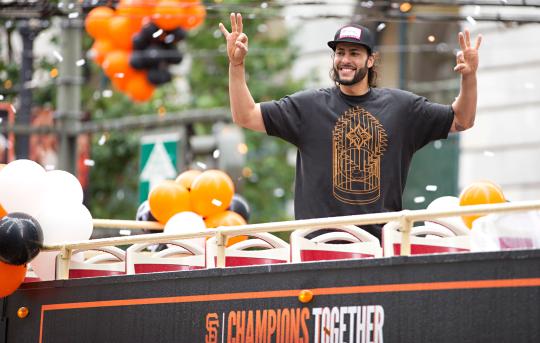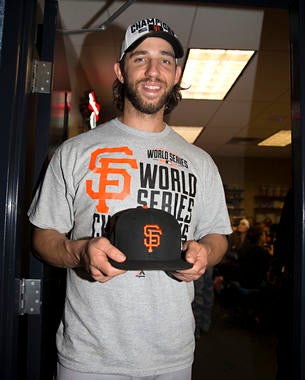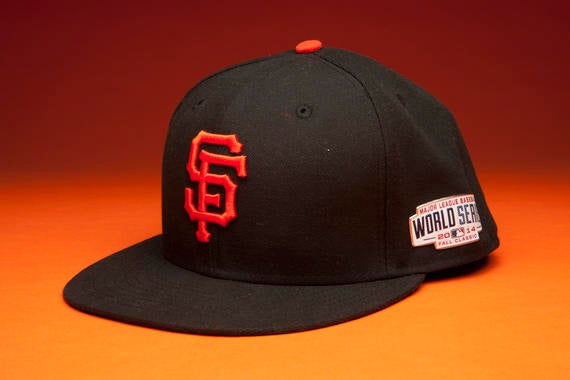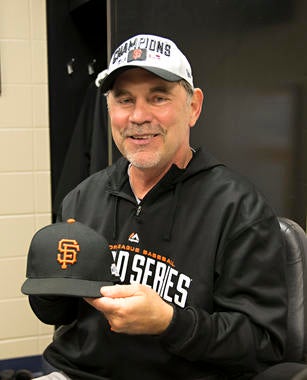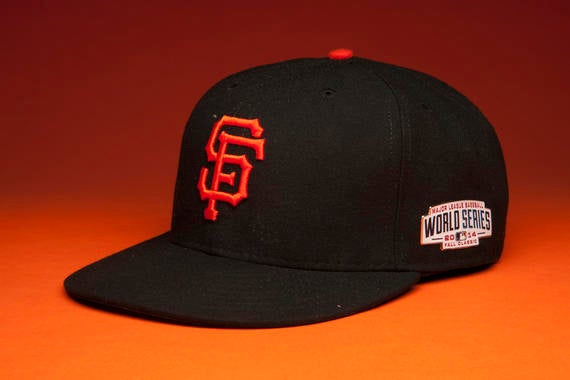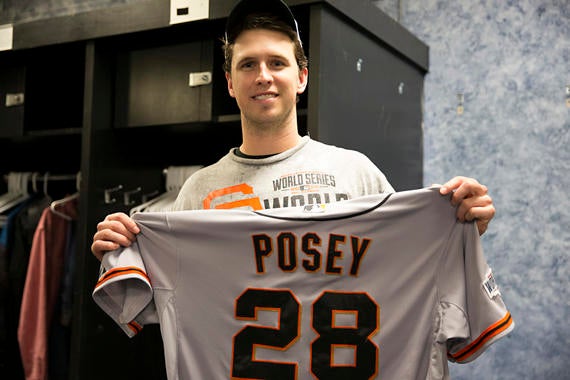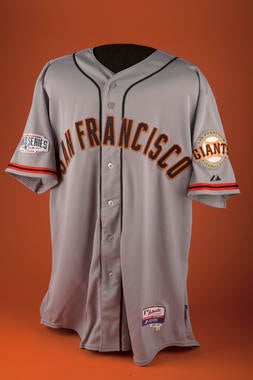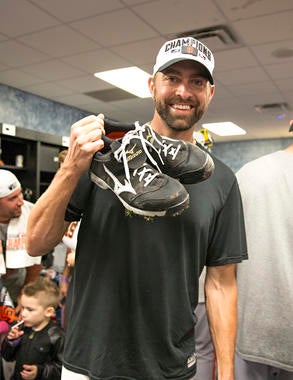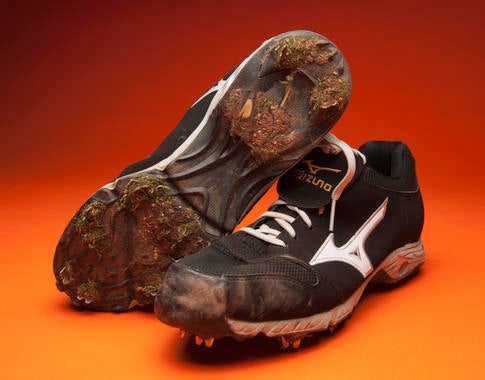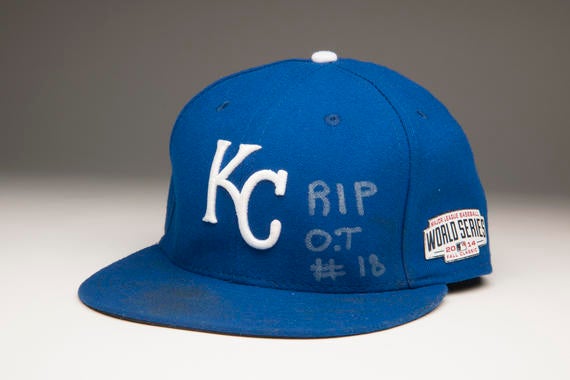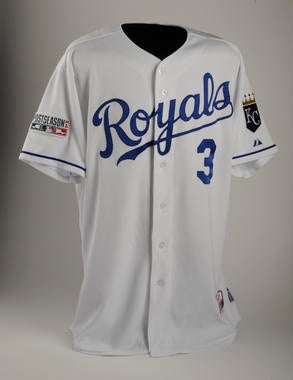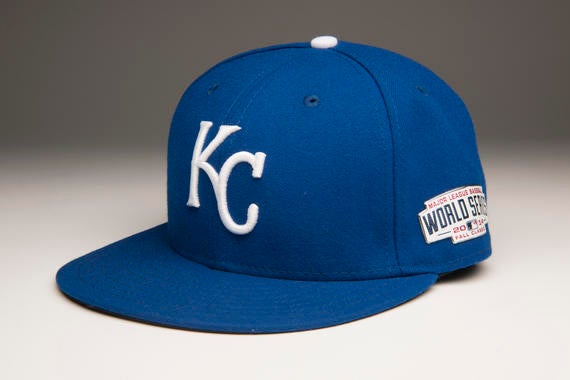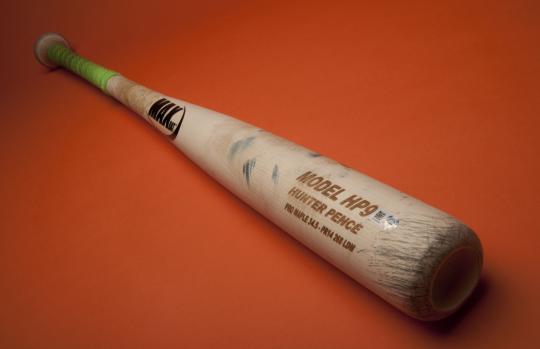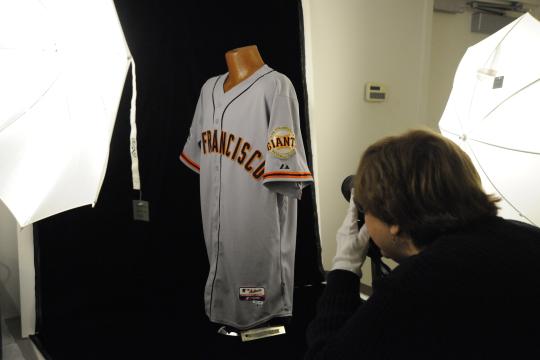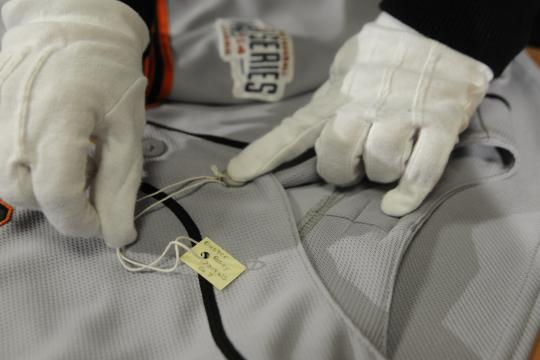Giants Back on Top
Hall of Fame President Jeff Idelson and Vice President Brad Horn were on hand in the Giants’ clubhouse at Kansas City’s Kauffman Stadium to ask players and coaches if they would be willing to send their equipment to Cooperstown.
“It’s a very euphoric and ecstatic place to be,” Horn said. “The clubhouse celebration is unlike anything else in baseball, given its pure and unscripted joy.”
Horn said the process for assembling this year’s collection could not fully begin until Giants third baseman Pablo Sandoval secured the final out in Game 7.
“Early on in the day (of Game 7), Jeff and I had ‘if the Royals win’ and ‘if the Giants win’ plans – and then the storyline unfolds,” said Horn. “(World Series MVP) Madison Bumgarner was a consistent piece of the puzzle, but (Game 7) winner Jeremy Affeldt really came out of the blue. He shut down the Royals at a really key moment in the game, and he became a wild card for us that emerged as Game 7 was happening.”
DiFranza said the new exhibit should be fully installed by Friday, Nov. 21, before it officially opens to the public the next day. Red Sox fans, meanwhile, have no need to worry: Several Boston artifacts from the current Autumn Glory exhibit will simply be relocated around the Museum. The bat used by 2013 World Series MVP David Ortiz will be featured in the World Series timeline on the third floor, while two other artifacts will be placed in the Red Sox locker in the Today’s Game exhibit on the second floor.
From the diamond to Cooperstown
The National Baseball Hall of Fame and Museum accessions (admits to the collection) hundreds of three-dimensional artifacts every year. The process starts with the Accessions Committee, which meets once a month to vote on each offered artifact. Though all artifacts come to the Museum as donations, a significant cost is involved with the perpetual care of each piece.
When the Museum agrees to accession an artifact, we agree to care for it in perpetuity.

